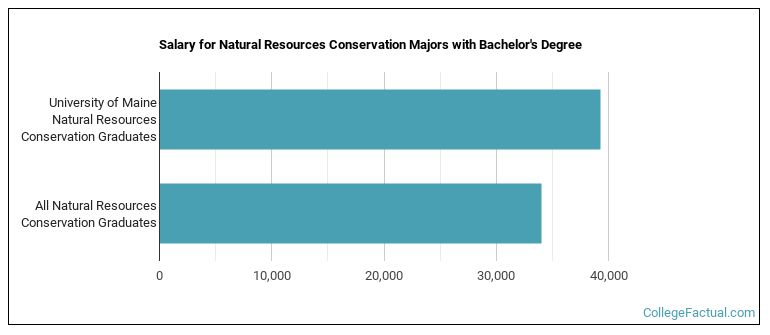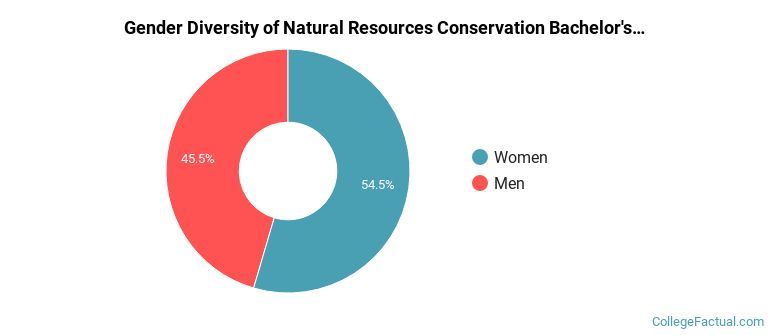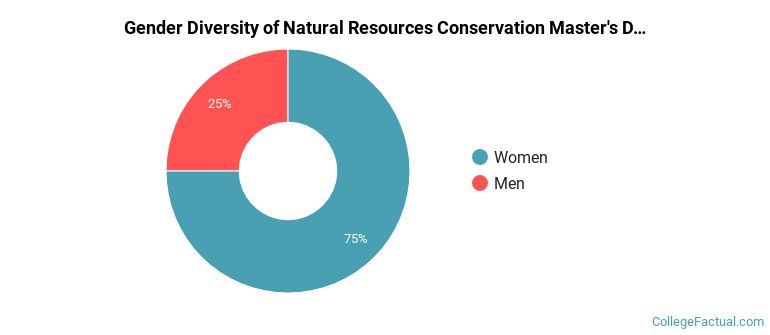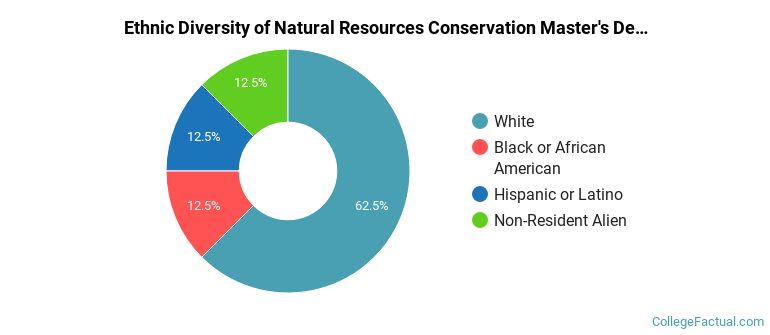 by our College Data Analytics Team
by our College Data Analytics TeamWe've gathered data and other essential information about the program, such as the average salary of graduates, ethnicity of students, how many students graduated in recent times, and more. In addition, we cover how UMaine ranks in comparison to other schools with conservation programs.
Go directly to any of the following sections:
The bachelor's program at UMaine was ranked #242 on College Factual's Best Schools for conservation list. It is also ranked #5 in Maine.
During the 2021-2022 academic year, University of Maine handed out 44 bachelor's degrees in natural resources conservation. This is an increase of 10% over the previous year when 40 degrees were handed out.
In 2022, 9 students received their master’s degree in conservation from UMaine. This makes it the #95 most popular school for conservation master’s degree candidates in the country.
In addition, 8 students received their doctoral degrees in conservation in 2022, making the school the #11 most popular school in the United States for this category of students.
The median salary of conservation students who receive their bachelor's degree at UMaine is $39,297. This is great news for graduates of the program, since this figure is higher than the national average of $34,020 for all conservation bachelor's degree recipients.

Out-of-state part-time undergraduates at UMaine paid an average of $1,158 per credit hour in 2022-2023. The average for in-state students was $400 per credit hour. Information about average full-time undergraduate tuition and fees is shown in the table below.
| In State | Out of State | |
|---|---|---|
| Tuition | $12,000 | $34,740 |
| Fees | $606 | $606 |
| Books and Supplies | $1,000 | $1,000 |
| On Campus Room and Board | $12,696 | $12,696 |
| On Campus Other Expenses | $2,270 | $2,270 |
Learn more about UMaine tuition and fees.
Of the 44 conservation students who graduated with a bachelor's degree in 2021-2022 from UMaine, about 45% were men and 55% were women.

The majority of the students with this major are white. About 89% of 2022 graduates were in this category.
The following table and chart show the ethnic background for students who recently graduated from University of Maine with a bachelor's in conservation.

| Ethnic Background | Number of Students |
|---|---|
| Asian | 0 |
| Black or African American | 0 |
| Hispanic or Latino | 3 |
| White | 39 |
| Non-Resident Aliens | 0 |
| Other Races | 2 |
UMaine does not offer an online option for its conservation bachelor’s degree program at this time. To see if the school offers distance learning options in other areas, visit the UMaine Online Learning page.
For the most recent academic year available, 25% of conservation master's degrees went to men and 75% went to women.

The majority of master's degree recipients in this major at UMaine are white. In the most recent graduating class for which data is available, 63% of students fell into this category.
The following table and chart show the ethnic background for students who recently graduated from University of Maine with a master's in conservation.

| Ethnic Background | Number of Students |
|---|---|
| Asian | 0 |
| Black or African American | 1 |
| Hispanic or Latino | 1 |
| White | 5 |
| Non-Resident Aliens | 1 |
| Other Races | 0 |
Take a look at the following statistics related to the make-up of the conservation majors at University of Maine.
| Related Major | Annual Graduates |
|---|---|
| Wildlife Management | 37 |
| Forestry | 32 |
More about our data sources and methodologies.